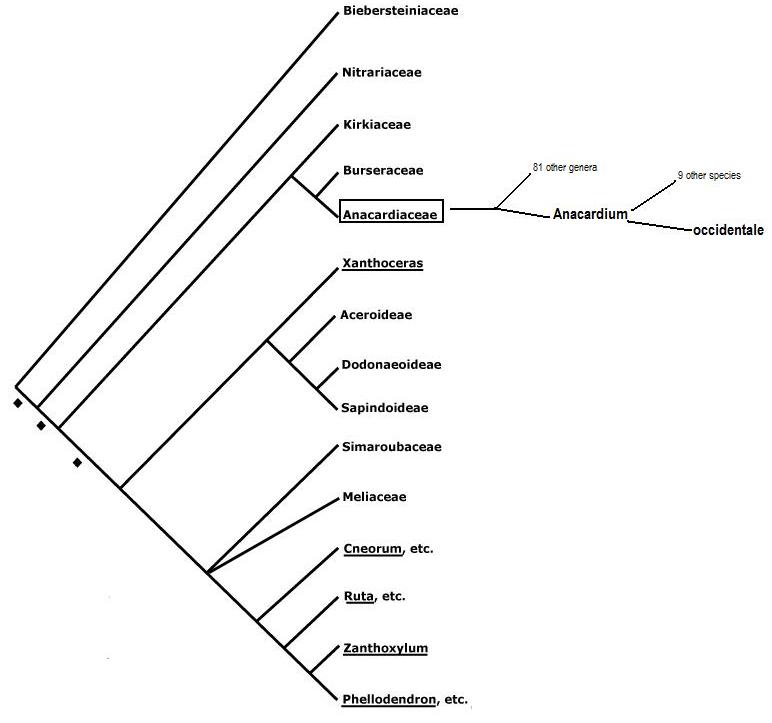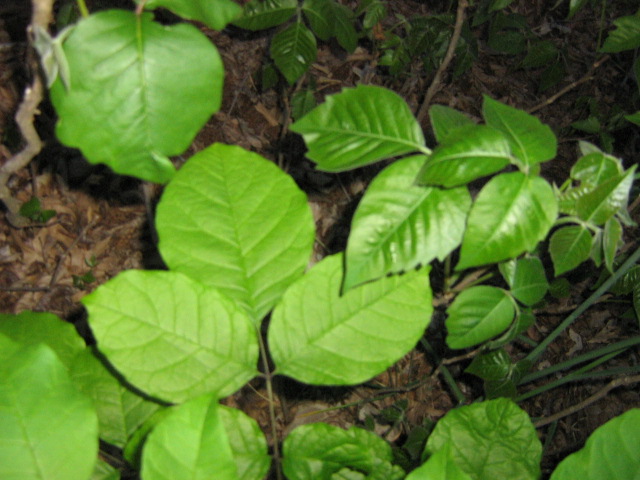The Cashew's Cousins

Domain:
Eukaryota
This organism possesses a true nucleus and membrane
bound organelles.
Kingdom: Plantae
This organism is multicellular, autotrophic and contain
cell walls made of cellulose.
Subkingdom:
Tracheobionta
This plant possesses vascular tissues for the transport
of water and nutrients.
Phylum:
Magnoliophyta
This plant is an Angiosperm, a flowering plant.
Class:
Magnoliopsida
This organism is a dicotyledon (dicot), meaning that
it's seed has two cotyledons, flower parts in multiples of four
or five, net-like veins, and secondary growth.
Subclass: Rosidae
This organism has showy flowers and more stamens then
petals.
Order:
Sapindales
This organism has compound leaves as well as
glandular cavities in the leaves.
Family:
Anacardiacae
This organism contains non-endospermic seeds and has a
hard seed covering structure.
Genus:
Anacardium
This organism has the nut growing out of it, rather
than inside the fruit.
Species:
occidentale
Species Anacardium occidentale is a flowering
plant that produces a two part, edible fruit and is native to
South America.
This phylogenetic tree for Anacardium occidentale was based mostly on morphology. It takes takes you through a quick overview of the classifications of the cashew tree, up to the Order. The tree below moves through the Order to the Species.
The Cashew has many noteworthy and commonly known relatives. These include the Pistachio Tree (Pistacia vera), Mango Tree ( Genus Mangifera), Poison Ivy (Toxicodendron radicans), and Poison Sumac (Rhus verni).




